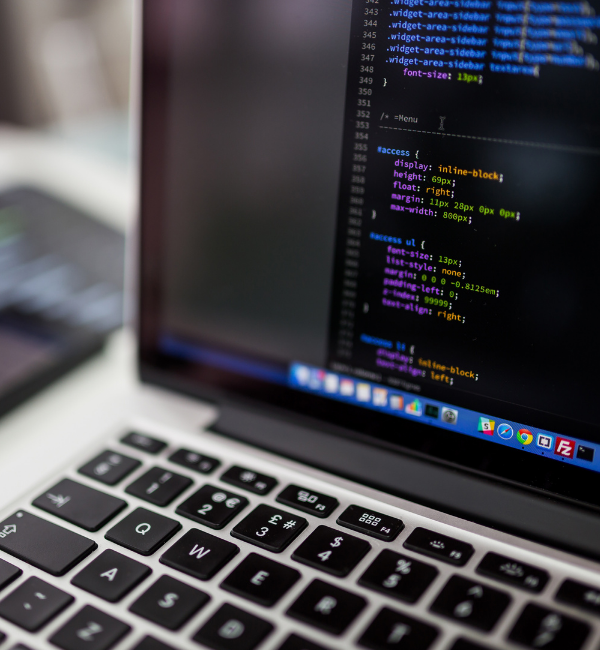You Be The Computer


Learners will practice and further develop their human emotion and facial recognition skills, similar to how AI programs learn.
What You Need
- Writing tool (ex. pen or pencil)
- Unlined, blank paper (enough for each learner to draw five faces)
- Videos (optional pre-activity)
- Access to technology: device to take pictures
- Unplugged Activity: Emotion Slides:
Guide:
Safety Notes
Ensure you are familiar with Let's Talk Science's precautions with respect to safe delivery of outreach to youth.
What To Do
Pre-activity (optional)
Show learners the following videos to best support learning outcomes:
- Watch this episode of The Solutioneers, where the team is incorporating AI facial recognition software into their robot. They set up a baseline and teach the computer the differences between a smile and a frown (~4minutes).
- Watch the episode of Maker Space , where the Makers walk through setting up and using Microsoft’s cognitive emotion tracking services, allowing their EZ-Robots to track emotions (~5minutes).
Activity
- Ask educator to spilt learners into small groups (approximately four learners) to work together.
- Taking turns, learners collect data by taking five pictures of each person in the group, where each picture needs to capture one of the following emotional states:
- No emotion (neutral)
- Happy (smiling)
- Sad
- Surprised
- Angry
NOTE! If learners do not have access to technology to take photos, prepared emotion slides can be substituted for step two and three of these instructions.
- Learners study the faces of the pictures they took, paying close attention to eyes, eyebrows, mouth position, etc. to learn how best to capture and replicate certain emotional responses.
- Once learners have completed their ‘study’, they break off independently to each draw five faces, where each face shows one of the five emotional states, outlined in step two of these instructions.
NOTE! If learners are struggling, encourage them to compare emotional photo states to the neutral photos.
- Once all learners of each group have drawn the five different faces, capturing the five emotional states, learners come back together in their groups to test out their 'emotion recognition' by asking each other to identify the emotion shown in their different drawings.
Discovery
Reading human emotions is something artificial intelligence (AI) programmers are currently working on. Computers are given thousands of pictures, of different humans, showing different emotions, to allow artificial intelligence programs to learn and recognize human emotion.
Did you know companion robots that can read human emotions are already being used in Japan? They are used in homes for the elderly! These robots help determine the mental health of the people living in the home. Emotion detection is also very useful in customer service robots. They are programmed to tell you a joke if it senses you are not in a good mood! How practical!
As technology advances, it is more important than ever that people contribute to the digital world. Understanding how AI learns and helps human beings, better equips learners for the future.
- Review the What is Artificial Intelligence backgrounder on Let’s Talk Science Educational Resources.
- Try hiding one part of a face on a drawing and see if learners can still identify the emotion.
- What features of the face provide the best information (or data) to show an emotion?
- Ask learners to think of other factors that could give robots a hint of how humans are feeling? (voice)
- Check out this career profile of Melissa Valdez that involves machine learning and artificial intelligence.
What's Happening?
Reading human emotions is something artificial intelligence (AI) programmers are currently working on. Computers are given thousands of pictures, of different humans, showing different emotions, to allow artificial intelligence programs to learn and recognize human emotion.
Did you know companion robots that can read human emotions are already being used in Japan? They are used in homes for the elderly! These robots help determine the mental health of the people living in the home. Emotion detection is also very useful in customer service robots. They are programmed to tell you a joke if it senses you are not in a good mood! How practical!
Why Does It Matter?
As technology advances, it is more important than ever that people contribute to the digital world. Understanding how AI learns and helps human beings, better equips learners for the future.
Investigate Further
- Review the What is Artificial Intelligence backgrounder on Let’s Talk Science Educational Resources.
- Try hiding one part of a face on a drawing and see if learners can still identify the emotion.
- What features of the face provide the best information (or data) to show an emotion?
- Ask learners to think of other factors that could give robots a hint of how humans are feeling? (voice)
- Check out this career profile of Melissa Valdez that involves machine learning and artificial intelligence.